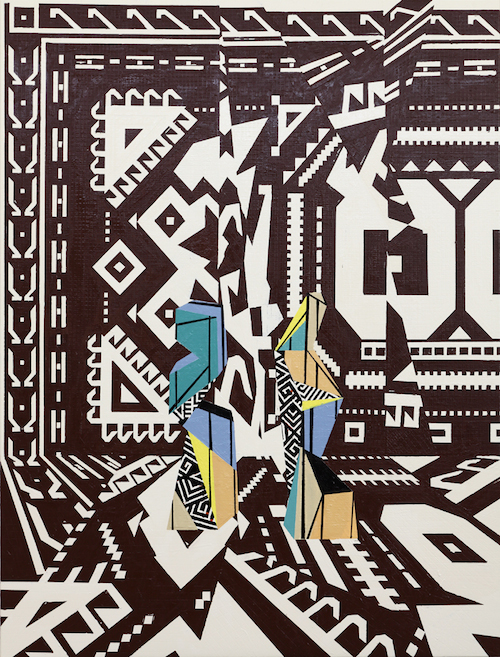Farah Atassi
xippas art contemporain
xippas art contemporain

19 September – 1 November 2014
Farah Atassi’s nomination for the Prix Marcel Duchamp in 2013 focused significant attention on the Belgian painter, pressure to which the artist has responded admirably. Since her graduation in 2005 from the École nationale supérieure des Beaux-Arts in Paris, Atassi had been creating bare interior landscapes, generic spaces such as kitchens and bathrooms. These paintings were delineated by grids that often both emphasized the perspective of the spaces and described utilitarian tiling; in such cold, clinical locations residues of distress might be sluiced away, manifested by additional washed areas of colour. Recently, however, Atassi’s work has evolved, and five of her works from 2014 were exhibited in Geneva.

She has remained true to the same method for these new paintings, a laborious process of gridding and masking her canvases with tape before applying colour in oil and glycerol, then adjusting the tape lines and repeating the process numerous times, so that some areas receive many more layers of colour than others. If this added interesting texture to the earlier psychologically-charged interiors – a pretty well-worn subject for contemporary painters – the method really finds its mark in the most recent pieces, which abandon clear figuration to generate spaces which are much more elusive. At first view they are pattern compositions; the portrait format Sculptures for Painting, for example, has a dark reddish-brown ground in which repeating white shapes make borders on the left hand and upper edges that seem to be converging off-centre of the canvas. Moving downwards and right, sharp folds in the pattern shatter the regularity, or maybe displaced shards of the same image have come to rest on the surface. Added to this, two-thirds of the way down the image, the brown and white flatness takes a three-dimensional turn when added lines of perspective extend it towards the viewer. Two angular sculptural totems stand on this rudimentary stage, bodies outlined in much the same way as the patterns of the background, but their discrete palette of brighter colours and linked forms imbues them with greater volume.

Given Atassi’s facility to manipulate pattern and space, the viewer is inclined to form an easy connection to her Syrian roots, but titles like Folkloric Setting or Ornamental Setting both describe what they present and mock that attribution. And Cut-Outs, a bright red and white landscape work just under two metres wide, works with sawtooth-edged shapes akin to a woven Native American eye-dazzler. This pattern again just about suggests a backdrop for a collection of standing objects, though here the objects are less distinct in relation to their context. What can be made out of their semi-organic angularity could be inspired by Barbara Hepworth sculptures, or maybe Atassi was taken by Zaha Hadid’s uncomfortable, digitally designed furnishings. The final work is The Cloud, another stage for two totemic shapes in front of a swarming cloud of dark cobalt, black, gold, mustard and flesh-coloured rectangles. It creates the most fathomable space and thus the clearest link to Atassi’s previous works, but also initiates the impression that these are all vector-based designs – which is not the case. In elaborating her practice, Atassi has orchestrated an impressive conjunction of decorative pattern, a likeness to digitally generated forms and architectural space. It is remarkable when seen in reproduction, and astonishing when viewed first-hand.


















